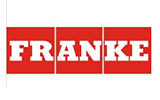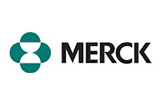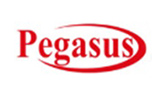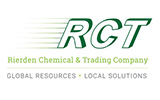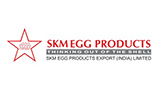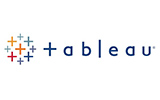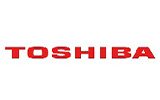CHAPTER 1:INTRODUCTION
1.1.Report description
1.2.Key benefits for stakeholders
1.3.Key market segments
1.4.Research methodology
1.4.1.Primary research
1.4.2.Secondary research
1.4.3.Analyst tools and models
CHAPTER 2:EXECUTIVE SUMMARY
2.1.Key findings
2.2.CXO perspective
CHAPTER 3:MARKET OVERVIEW
3.1.Market definition and scope
3.2.Key forces shaping the market
3.3.Value chain analysis
3.4.Parent-Peer Market Overview, 2020
3.5.Top investment pockets
3.6.Market share analysis, 2019
3.7.Patent analysis
3.7.1.By region, 2013-2019
3.7.2.By applicant, 2013-2019
3.8.Market dynamics
3.8.1.Drivers
3.8.1.1.IMO regulation on sulfur content in the marine fuel
3.8.1.2.Increase in offshore oil & gas exploration activities
3.8.2.Restraints
3.8.2.1.Fuel reduction initiatives by the shipping community
3.8.3.Opportunity
3.8.3.1.LNG bunkering financing opportunities
3.9.Impact of key regulations on the global bunker fuel market
3.9.1.Global bunker fuel regulations
3.9.2.Global Adoption of IMO 2020
3.10.Impact of COVID-19 outbreak on the market
3.10.1.Changes in the Shipping and Port Sector due to COVID-19
3.11.Ports and Their suppliers
3.11.1.Port of Singapore
3.11.2.Port of Fujairah, UAE
3.11.3.Port of Rotterdam, The Netherlands
3.11.4.Port of Jeddah, Saudi Arabia
3.11.5.Port of Suez, Egypt
3.11.6.Port Elizabeth, South Africa
3.11.7.Port of Salalah, Oman
CHAPTER 4:BUNKER FUEL MARKET, BY TYPE
4.1.Overview
4.1.1.Market size and forecast
4.2.High sulfur fuel oil
4.2.1.Key market trends, growth factors, and opportunities
4.2.2.Market size and forecast, by region
4.2.3.Market share analysis, by country
4.3.Low sulfur fuel oil
4.3.1.Key market trends, growth factors, and opportunities
4.3.2.Market size and forecast, by region
4.3.3.Market share analysis, by country
4.4.Marine gasoil/Marine diesel oil (MGO/MDO)
4.4.1.Key market trends, growth factors, and opportunities
4.4.2.Market size and forecast, by region
4.4.3.Market share analysis, by country
4.5.Others
4.5.1.Key market trends, growth factors, and opportunities
4.5.2.Market size and forecast, by region
4.5.3.Market share analysis, by country
CHAPTER 5:BUNKER FUEL MARKET, BY COMMERCIAL DISTRIBUTOR
5.1.Overview
5.1.1.Market size and forecast
5.2.Oil majors
5.2.1.Key market trends, growth factors, and opportunities
5.2.2.Market size and forecast, by region
5.2.3.Market share analysis, by country
5.3.Large independent distributor
5.3.1.Key market trends, growth factors, and opportunities
5.3.2.Market size and forecast, by region
5.3.3.Market share analysis, by country
5.4.Small independent distributors
5.4.1.Key market trends, growth factors, and opportunities
5.4.2.Market size and forecast, by region
5.4.3.Market share analysis, by country
CHAPTER 6:BUNKER FUEL MARKET, BY APPLICATION
6.1.Overview
6.1.1.Market size and forecast
6.2.Container
6.2.1.Key market trends, growth factors, and opportunities
6.2.2.Market size and forecast, by region
6.2.3.Market share analysis, by country
6.3.Bulk carrier
6.3.1.Key market trends, growth factors, and opportunities
6.3.2.Market size and forecast, by region
6.3.3.Market share analysis, by country
6.4.Oil tanker
6.4.1.Key market trends, growth factors, and opportunities
6.4.2.Market size and forecast, by region
6.4.3.Market share analysis, by country
6.5.General cargo
6.5.1.Key market trends, growth factors, and opportunities
6.5.2.Market size and forecast, by region
6.5.3.Market share analysis, by country
6.6.Chemical tanker
6.6.1.Key market trends, growth factors, and opportunities
6.6.2.Market size and forecast, by region
6.6.3.Market share analysis, by country
6.7.Fishing vessels
6.7.1.Key market trends, growth factors, and opportunities
6.7.2.Market size and forecast, by region
6.7.3.Market share analysis, by country
6.8.Gas tankers
6.8.1.Key market trends, growth factors, and opportunities
6.8.2.Market size and forecast, by region
6.8.3.Market share analysis, by country
6.9.Others
6.9.1.Key market trends, growth factors, and opportunities
6.9.2.Market size and forecast, by region
6.9.3.Market share analysis, by country
CHAPTER 7:BUNKER FUEL MARKET, BY REGION
7.1.Overview
7.1.1.Market size and forecast
7.2.North America
7.2.1.Key market trends, growth factors, and opportunities
7.2.2.Market size and forecast, by type
7.2.3.Market size and forecast, by commercial distributor
7.2.4.Market size and forecast, by application
7.2.5.Market share analysis, by country
7.2.6.The U.S.
7.2.6.1.Market size and forecast, by type
7.2.6.2.Market size and forecast, by commercial distributor
7.2.6.3.Market size and forecast, by application
7.2.7.Canada
7.2.7.1.Market size and forecast, by type
7.2.7.2.Market size and forecast, by commercial distributor
7.2.7.3.Market size and forecast, by application
7.2.8.Mexico
7.2.8.1.Market size and forecast, by type
7.2.8.2.Market size and forecast, by commercial distributor
7.2.8.3.Market size and forecast, by application
7.3.Europe
7.3.1.Key market trends, growth factors, and opportunities
7.3.2.Market size and forecast, by type
7.3.3.Market size and forecast, by commercial distributor
7.3.4.Market size and forecast, by application
7.3.5.Market share analysis, by country
7.3.6.Germany
7.3.6.1.Market size and forecast, by type
7.3.6.2.Market size and forecast, by commercial distributor
7.3.6.3.Market size and forecast, by application
7.3.7.France
7.3.7.1.Market size and forecast, by type
7.3.7.2.Market size and forecast, by commercial distributor
7.3.7.3.Market size and forecast, by application
7.3.8.UK
7.3.8.1.Market size and forecast, by type
7.3.8.2.Market size and forecast, by commercial distributor
7.3.8.3.Market size and forecast, by application
7.3.9.Italy
7.3.9.1.Market size and forecast, by type
7.3.9.2.Market size and forecast, by commercial distributor
7.3.9.3.Market size and forecast, by application
7.3.10.Spain
7.3.10.1.Market size and forecast, by type
7.3.10.2.Market size and forecast, by commercial distributor
7.3.10.3.Market size and forecast, by application
7.3.11.Rest of Europe
7.3.11.1.Market size and forecast, by type
7.3.11.2.Market size and forecast, by commercial distributor
7.3.11.3.Market size and forecast, by application
7.4.Asia-Pacific
7.4.1.Key market trends, growth factors, and opportunities
7.4.2.Market size and forecast, by type
7.4.3.Market size and forecast, by commercial distributor
7.4.4.Market size and forecast, by application
7.4.5.Market share analysis, by country
7.4.6.China
7.4.6.1.Market size and forecast, by type
7.4.6.2.Market size and forecast, by commercial distributor
7.4.6.3.Market size and forecast, by application
7.4.7.Japan
7.4.7.1.Market size and forecast, by type
7.4.7.2.Market size and forecast, by commercial distributor
7.4.7.3.Market size and forecast, by application
7.4.8.India
7.4.8.1.Market size and forecast, by type
7.4.8.2.Market size and forecast, by commercial distributor
7.4.8.3.Market size and forecast, by application
7.4.9.South Korea
7.4.9.1.Market size and forecast, by type
7.4.9.2.Market size and forecast, by commercial distributor
7.4.9.3.Market size and forecast, by application
7.4.10.Singapore
7.4.10.1.Market size and forecast, by type
7.4.10.2.Market size and forecast, by commercial distributor
7.4.10.3.Market size and forecast, by application
7.4.11.Rest of Asia-Pacific
7.4.11.1.Market size and forecast, by type
7.4.11.2.Market size and forecast, by commercial distributor
7.4.11.3.Market size and forecast, by application
7.5.LAMEA
7.5.1.Key market trends, growth factors, and opportunities
7.5.2.Market size and forecast, by type
7.5.3.Market size and forecast, by commercial distributor
7.5.4.Market size and forecast, by application
7.5.5.Market share analysis, by country
7.5.6.Market share analysis, by country
7.5.7.Brazil
7.5.7.1.Market size and forecast, by type
7.5.7.2.Market size and forecast, by commercial distributor
7.5.7.3.Market size and forecast, by application
7.5.8.South Africa
7.5.8.1.Market size and forecast, by type
7.5.8.2.Market size and forecast, by commercial distributor
7.5.8.3.Market size and forecast, by application
7.5.9.Saudi Arabia
7.5.9.1.Market size and forecast, by type
7.5.9.2.Market size and forecast, by commercial distributor
7.5.9.3.Market size and forecast, by application
7.5.10.UAE
7.5.10.1.Market size and forecast, by type
7.5.10.2.Market size and forecast, by commercial distributor
7.5.10.3.Market size and forecast, by application
7.5.11.Qatar
7.5.11.1.Market size and forecast, by type
7.5.11.2.Market size and forecast, by commercial distributor
7.5.11.3.Market size and forecast, by application
7.5.12.Kuwait
7.5.12.1.Market size and forecast, by type
7.5.12.2.Market size and forecast, by commercial distributor
7.5.12.3.Market size and forecast, by application
7.5.13.Iraq
7.5.13.1.Market size and forecast, by type
7.5.13.2.Market size and forecast, by commercial distributor
7.5.13.3.Market size and forecast, by application
7.5.14.Djibouti
7.5.14.1.Market size and forecast, by type
7.5.14.2.Market size and forecast, by commercial distributor
7.5.14.3.Market size and forecast, by application
7.5.15.East Africa (Except Djibouti)
7.5.15.1.Market size and forecast, by type
7.5.15.2.Market size and forecast, by commercial distributor
7.5.15.3.Market size and forecast, by application
7.5.16.Oman
7.5.16.1.Market size and forecast, by type
7.5.16.2.Market size and forecast, by commercial distributor
7.5.16.3.Market size and forecast, by application
7.5.17.Egypt
7.5.17.1.Market size and forecast, by type
7.5.17.2.Market size and forecast, by commercial distributor
7.5.17.3.Market size and forecast, by application
7.5.18.Rest of LAMEA
7.5.18.1.Market size and forecast, by type
7.5.18.2.Market size and forecast, by commercial distributor
7.5.18.3.Market size and forecast, by application
CHAPTER 8:COMPETITIVE LANDSCAPE
8.1.Introduction
8.1.1.Market player positioning, 2019
8.2.Top winning strategies
8.2.1.Top winning strategies, by year
8.2.2.Top winning strategies, by development
8.2.3.Top winning strategies, by company
8.3.Product Mapping of Top 10 Player
8.4.Competitive Heatmap
8.5.Competitive Dashboard
8.6.Key developments
8.6.1.New product launches
8.6.2.Agreement
8.6.3.Partnerships
8.6.4.Acquisition
8.6.5.Business expansions
CHAPTER 9:COMPANY PROFILES
9.1.BP P.L.C.
9.1.1.Company overview
9.1.2.Company snapshot
9.1.3.Operating business segments
9.1.4.Product portfolio
9.1.5.Business performance
9.1.6.Key strategic moves and developments
9.2.EXXON MOBIL CORPORATION
9.2.1.Company overview
9.2.2.Company snapshot
9.2.3.Operating business segments
9.2.4.Product portfolio
9.2.5.Business performance
9.2.6.Key strategic moves and developments
9.3.ROYAL DUTCH SHELL PLC
9.3.1.Company overview
9.3.2.Company snapshot
9.3.3.Operating business segments
9.3.4.Product portfolio
9.3.5.Business performance
9.3.6.Key strategic moves and developments
9.4.LUKOIL
9.4.1.Company overview
9.4.2.Company snapshot
9.4.3.Operating business segments
9.4.4.Product portfolio
9.4.5.Business performance
9.4.6.Key strategic moves and developments
9.5.SINOPEC GROUP
9.5.1.Company overview
9.5.2.Company snapshot
9.5.3.Operating business segments
9.5.4.Product portfolio
9.5.5.Business performance
9.5.6.Key strategic moves and developments
9.6.GAZPROM NEFT PJSC
9.6.1.Company overview
9.6.2.Company snapshot
9.6.3.Operating business segments
9.6.4.Product portfolio
9.6.5.Business performance
9.6.6.Key strategic moves and developments
9.7.CHEVRON CORPORATION
9.7.1.Company overview
9.7.2.Company snapshot
9.7.3.Operating business segments
9.7.4.Product portfolio
9.7.5.Business performance
9.8.PETROLIAM NASIONAL BERHAD (PETRONAS)
9.8.1.Company overview
9.8.2.Company snapshot
9.8.3.Operating business segments
9.8.4.Product portfolio
9.8.5.Business performance
9.8.6.Key strategic moves and developments
9.9.TOTAL SE
9.9.1.Company overview
9.9.2.Company snapshot
9.9.3.Operating business segments
9.9.4.Product portfolio
9.9.5.Business performance
9.9.6.Key strategic moves and developments
9.10.NESTE
9.10.1.Company overview
9.10.2.Company snapshot
9.10.3.Operating business segments
9.10.4.Product portfolio
9.10.5.Business performance
9.10.6.Key strategic moves and developments






